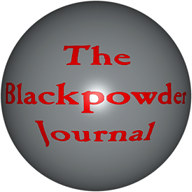How to Select the Right Bullet
Ozzie
Round Ball or Conical, which one is right?
Probably the most important factor to consider in bullet selection is the rate of twist in the rifling of your gun. In a rifle with a 1-66" twist, you will usually use a round ball with a cloth patch. If you really want to try a slug, we suggest using Buffalo Bullet Co.'s "ball-et", which is only about 1 1/2 times longer than it is wide (i.e. a slightly stretched round ball), however, it is sized to load without a patch and often gives acceptable accuracy in a slow twist gun.
If your black powder firearm is equipped with a 1-48" twist barrel, you have the choice of a patched round ball and "mild" powder charge ( a heavy charge may cause the patched ball to strip out and not follow the rifling, thus reducing accuracy), or a slug of some design of your choosing. Since 1-48" is a compromise twist and not really very fast, you would probably find better accuracy with a shorter slug. For example, in the case of a .50 caliber maxi ball, you can pick from a 320 grain, 370 grain or 460 grain bullet. Going back to the rule that as the bullet gets longer the rate of twist needs to be faster to stabilize, and recognizing that 1-48" is only a medium rate of twist, then theory would say to use the shorter, or 320 grain, bullet.
In fast twist guns (1-32" or faster), you can probably forget round ball & patches, unless you want to play with very light powder charges to find an inexpensive "plunking" load. This is because a ball and patch may be 1/3 to 1/2 the price of a conical. A fast twist gun will actually shoot most any conical on the market. However, recoil may become a major factor when shooting a 400 or 500 grain bullet at hunting velocities out of a light weight carbine. We have heard many shooters complain about poor accuracy from their rifle when the only problem was the heavy "flinch" they had developed because of excessive recoil. A 240 grain Hornady XTP saboted bullet (bullet in a plastic jacket) over 90 grains of GOEX FFg (2F) powder in a .50 caliber rifle produces 1600 feet per second muzzle velocity, and 1365 foot pounds of energy. At 100 yards the bullet has a velocity of 1375 feet per second and 922 foot pounds of energy. This is a comfortable load out of most .50 caliber guns and still has the energy to do the job.
There is no one "right" answer to the question of the proper bullet. Try several bullets to find out which you like the best.
